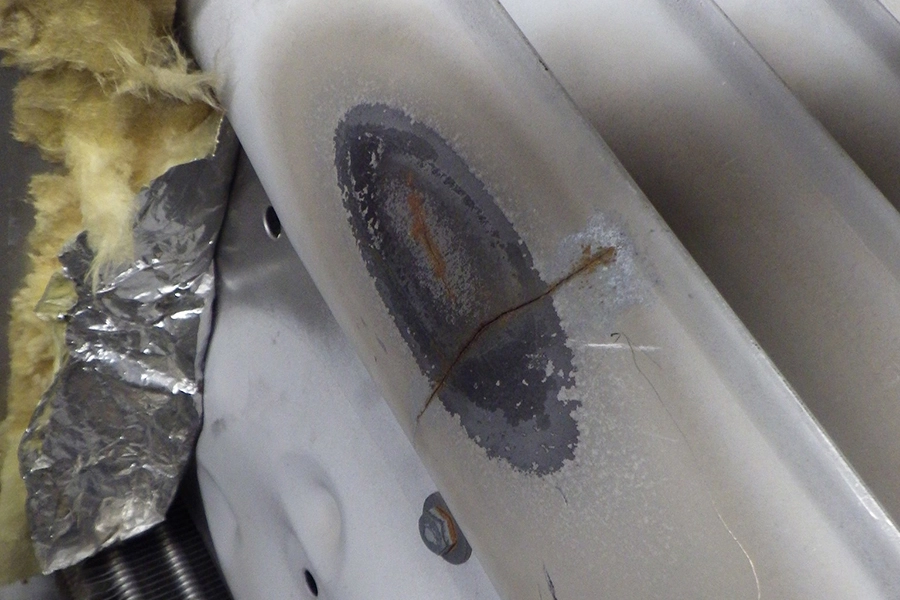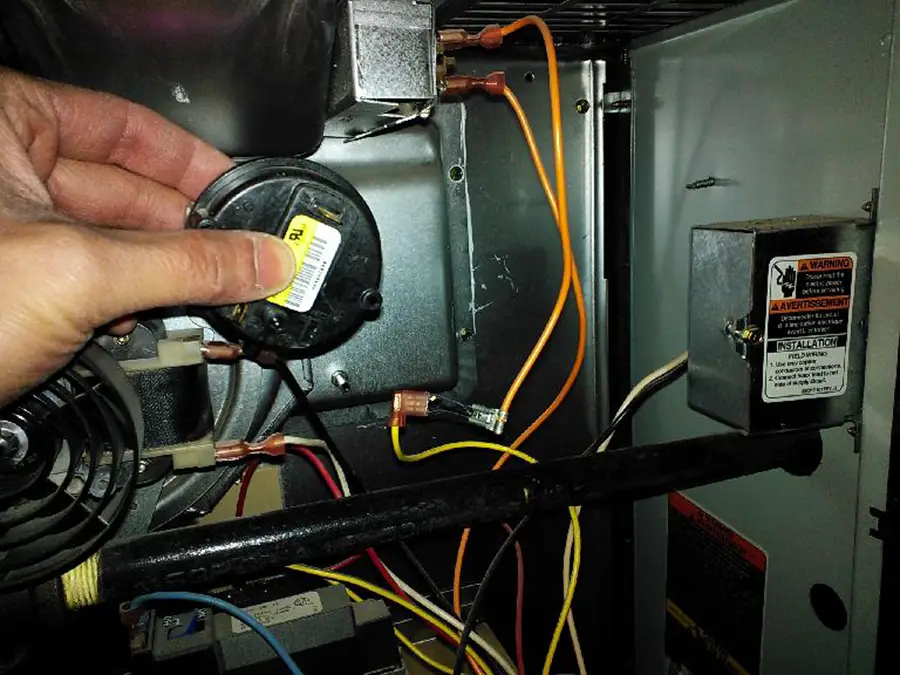One of the worst things that can happen during the cold months of winter would be to lose your heat. There are many reasons that your heat can stop working, but an all-too-common problem that I have seen is bad igniters.
Furnace igniters are the component of your furnace that gets red hot and lights the fuel so that your furnace can create heat. Although there are different styles of igniters, this is the principle of the most popular version. If you want to know how to diagnose a bad igniter, find out if you can replace it yourself, and see how much one may cost, then keep reading this article.
What is a furnace igniter and what does it do?
If you grew up with a fuel-burning furnace throughout your childhood, you might remember your parents having to light the pilot light when the weather started to get colder. That is precisely how the old furnaces used to work; they had to always have a small flame in the burner chamber, called a pilot light.
Today technology has made significant advancements, and we no longer need a pilot light; we now have igniters. There are two main types of igniters out there today, although one of them is quickly becoming outdated: spark ignitors and hot surface ignitors.
The first is a spark igniter, which causes a tiny spark in the fuel path, causing it to ignite.
The second is a silicon carbide hot surface igniter and what every new furnace comes equipped with today. It’s placed in the path of fuel similar to a spark ignitor, but it does not spark; it heats up to a red-hot temperature. Once it has reached a hot enough temperature, the furnace will begin to push the fuel source into the heat exchanger and past the igniter, which will light the fuel source and cause the furnace to start heating.
Locating your furnace ignitor
A safety note: Turn off the power to the furnace
If you attempt to remove your furnace doors, you should first ensure that all electricity to the furnace is turned off. If your furnace is plugged into the wall, you may be able to unplug it. If there is no power, then you should turn the correct breaker off and assure that the electricity is off by using an electrical tester.
A safety switch on newer units will turn the power off when the door is removed. However, many older furnaces do not have a switch or may not be functioning correctly. It’s common for safety switches to develop issues as they get older, which means that a technician may have wired around the switch so that, even with the doors off, the furnace will still have electricity to it.
Where is the igniter located?
Once the power is off, you will be able to remove the door and look inside the furnace. You should see the exhaust fan, a gas valve, and metal tubes. If you follow the pipe from your gas valve to the metal tubes, you will notice that orifices are coming from the pipe and into the metal tubes. These tubes are called your burner tubes. They will be what the fuel flows through right before it is ignited.
A metal plate will cover the burner tubes, but if you can look between the metal plate and the burner tubes, you will see a black shape at the end of the burner tube. It may be shaped like an M, an arch, a spring shape, or a straight flat rod. It should be a continuous black color and will have a sparkly appearance. This is your hot surface igniter.
Know how it works
No matter what style of igniter your furnace has, it will be in the location described above. We know this because, when the fuel reaches the end of the burner tube, it’s given a small amount of space before it’s sucked into the heat exchanger. This space allows the air and fuel to mix and allows the flame to work its way across the burner assembly and light all the tubes instead of just the first one. The igniter must be located after the burner tube to have the correct air/fuel mixture to ignite.
What are the signs that an igniter is not working?
Every furnace will start its operation with the same primary sequence:
- First, the furnace will allow the exhaust fan to run.
- The exhaust fan will create suction, closing the pressure switch.
- Once the pressure switch is closed, the furnace will know that it is exhausting correctly and can begin to heat the hot surface igniter.
- At this point, there will be a loud click that symbolizes the hot surface igniter is beginning to warm up.
- (This is the step where you will know that it is not working)
- Next, the hot surface igniter will glow red hot in preparation for the fuel source.
- There will be another click that represents the gas valve opening.
- The fuel source will be released and flow from the gas valve through the orifices to the igniter and then become ignited.
- The exhaust fan will pull the flames through the heat exchanger, the unit will warm up, and the blower fan will kick on.
At the point where the igniter is supposed to heat up is the time that you will know whether or not the igniter is operational. If your igniter has a white spot on it, this may be one of the only indications that it is nearing its end. White spots represent a weak spot and a sign that the igniter is nearing the end of its life. If an igniter fails, you can check it to see if there is a white line across the igniter. This is a good sign that it has a crack, keeping it from operating. Igniters can fail without warning; they are made of silicon carbide, and as a piece of glass, they are not repairable and will have to be replaced.
How long does a furnace igniter last?
It’s estimated that a hot surface igniter will last 4-6 years. This will depend highly on the circumstances it’s subjected to, so it’s hard to determine how long a hot surface igniter will last. Several factors can play into its life span like having your furnace located in a laundry room or any room with excessive dust. Dirt, dust, lint, or dog hair landing on the igniter can cause it to fail much quicker than it would have otherwise.
Another situation that may cause your furnace ignitor to fail is getting oils on the surface of the ignitor. The black silicon carbide should not be touched by bare skin. If you get the oils and chemicals from your hands onto the igniter, it can cause it to short out and break much faster than expected, possibly causing it to fail as quickly as within just a few minutes of the first ignition.
The manufacturer may also determine the length of time your igniter will last. If you buy an inexpensive or cheap product, it will not have the same amount of lifespan as a quality OEM igniter.
Can you replace it yourself?
You can replace a hot surface igniter yourself, but it will require you to be incredibly careful. First off, you will want to be sure the power is shut off. Ensure that the unit is unplugged if applicable or the breaker is shut off. To replace it, the old one will have to be removed. The igniter will have one screw that holds it in place. Remove the old one from the furnace.
Depending on which model of replacement you have, you may be able to plug the new one right back in. If you have a universal replacement, you can cut the plug off the old igniter and use the ceramic wire nuts to wire nut the new igniter in place. Then you will be able to plug it back in and reinstall it. Or you may choose to cut both plugs off and use the ceramic wire nuts provided with the kit to eliminate the plugs and wire them directly.
How much does it cost to replace an igniter?
A universal replacement can be found online for around $20-$40. You will want to make sure that you check reviews and fitment if you purchase your igniter. Just because it says it is universal does not mean that it is versatile and may be missing a crucial component to fit your unit.
The cost of replacing an igniter can depend on several factors. If you have a premium unit brand, you may have to replace it with the specific igniter for that unit. This will cost significantly more than a universal replacement. If you have a professional install it, you will need to consider the cost of labor and part markup. It could cost you around a $100 to have it professionally changed.
You will also want to ensure the reviews confirm that it is a good igniter if buying online. There are cheap igniters that do not work very well and may fail far sooner than a quality model.
Final thoughts
If your furnace is not operating correctly and you suspect that it may be your hot surface igniter, then you may be able to attempt the repair yourself. However, it’s always recommended that you leave repairs to the professionals. Having a professional repair the issue may cost more, but you will be left with the confidence that it is repaired correctly and without any danger to yourself.
Tell us about your experience with furnace igniters in the comments below.





Great blog post on furnace ignitor issues as an owner I liked your blog in the way of explaining in detail along with images what furnace ignitor do and how to locate ignitor and working are not
last month furnace is not working well after reading your blog I have find out the issue and replaced the new ignitor part from PartsHnC and it working well thankyou for sharing valuable information on furnace ignitor issues.